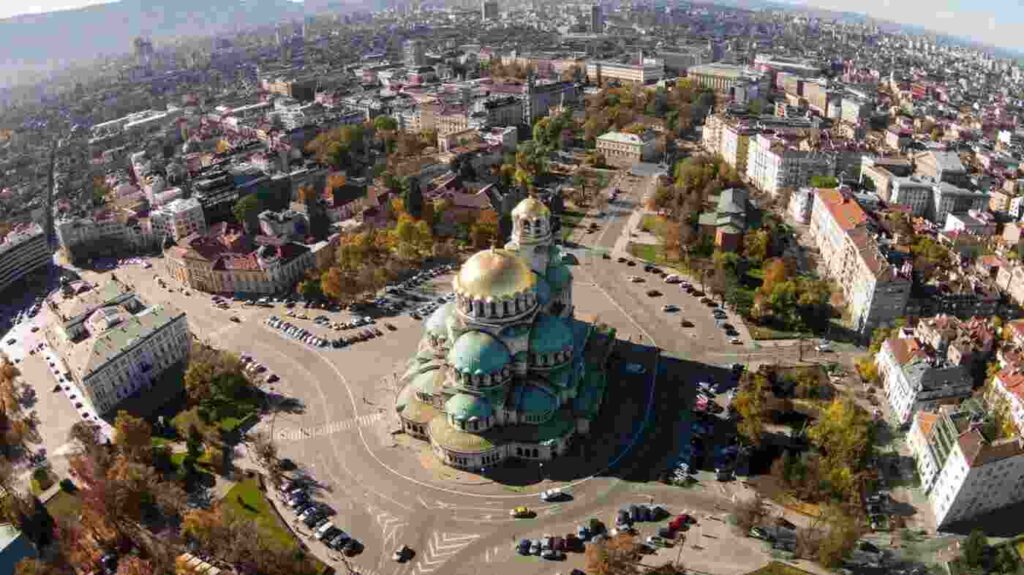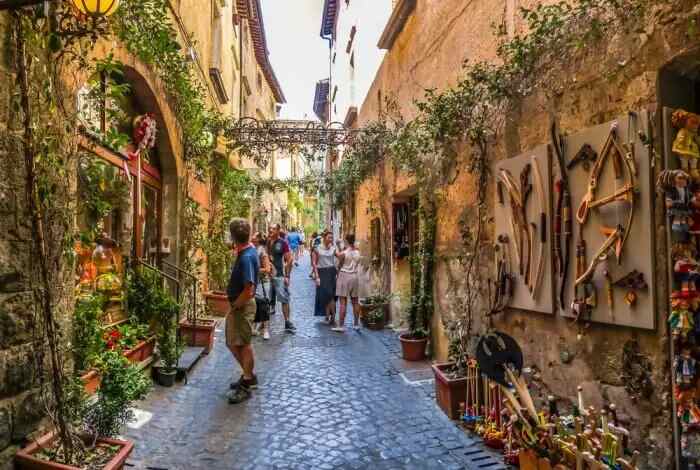Rome’s magic is well known, to put it mildly, yet it’s still simple to forget how many great things there are to do here. The Italian capital is definitely up there with the most well-known cities in the world. It was once the world’s capital and is home to huge archaeological treasures, great art collections, and an abundance of culturally significant landmarks. No one can be let down by the Eternal City.

The ancient Romans called Rome the “Eternal City” because they thought that no matter what happened elsewhere in the globe, Rome would always stand. You can travel back in time to the “glory that was Rome” by exploring the city centre on foot while surrounded by magnificent structures and enormous ruins.

What should you see or do in Rome:
- Pantheon: The Pantheon is one of the best-preserved structures from ancient Rome and still serves as a source of motivation for visitors today. It was an ancient Roman temple devoted to “All of the Gods.” Hadrian the emperor constructed it. When rose petals are released from the oculus during the festival of Easter, which falls on June 9 this year, be sure to attend Sunday Mass.
- Vatican Museum and Sistine Chapel: The 54 galleries, courtyards, and corridors that make up the museums, which were founded by Pope Julius II in the 16th century, are home to one of the world’s greatest and most significant art collections. The Sistine Chapel is home to tens of thousands of historic sculptures, Raphael pieces, and, of course, Michelangelo’s masterpieces.
- Gianicolo: Rome, often known as the “City of Seven Hills,” is famous for its beautiful vantage points and countless terraces that offer breathtaking glimpses of the city skyline. Since it is Rome’s highest peak and provides a wide-ranging view of the Eternal City, the journey is worthwhile.
- Stadio Olimpico: AS Roma and SS Lazio are two elite football teams located in Rome. Both compete at the Stadio Olimpico, which is also Rome’s biggest sports venue. A journey to the stadium promises to be a show of flares and chanting and a sense of atmospheric drama a million miles away from the beautiful centro storico, but only the most daring tourists may choose to attend a Roma-Lazio game.
- Colosseum: The Colosseum, also known as the “Flavian Amphitheatre,” was the largest amphitheatre ever constructed. It was constructed between 70 and 80 AD and had a capacity of 80,000 people. The arena was built to hold terrible public events, like gladiator fights, animal hunts, executions, and even sea warfare when the arena was full of water and ships.
- National Museum of Rome: Although Rome’s four national museums have been disregarded for a while, they currently offer some of the most fascinating cultural offerings in the Eternal City, showcasing both modern artworks and ancient sculptures alongside interactive videos and other media. The museums are spread among four locations: Palazzo Massimo alle Terme, Palazzo Altemps, the Baths of Diocletian, and Crypta Balbi. They house significant archaeological artefacts found in Rome. All four attractions are accessible with a combination ticket for €11 over a three-day period.
- Domus Aurea: The lavish Domus Aurea (Golden House) of Emperor Nero is a rare window into underground Rome and was regarded as one of the most impressive homes of its time. Visitors can join guided tours every Saturday and Sunday even though the site is undergoing renovation. A virtual reality tour is additionally provided to help recreate the villa’s previous beauty.
- Rome Open Opera: The Teatro dell’Opera, a neo-classical opera theatre constructed at the end of the 19th century, hosts about 200 events per year, ranging from opera and ballet to modern dance. To produce cutting-edge productions, the opera house has worked with a number of well-known fashion designers and studios, including Sofia Coppola, Valentino, and Dior.
- Castle Sant’Angelo: Hadrian, the Roman emperor, constructed the striking cylindrical stronghold known as Castel Sant’Angelo, or “The Castle of Angels,” on the banks of the Tiber River in the second century AD. It even has a hidden escape route connecting the building to Vatican City. It is now a museum featuring rooms decorated with frescoes, a collection of mediaeval weapons, and panoramic views of Rome and the surrounding St. Peter’s Basilica.
- Borghese Gallery and Museum: Expect to find great works inside because the Cardinal was an enthusiastic art collector and one of Gian Lorenzo Bernini’s early supporters. He was also a huge admirer of Caravaggio’s artwork. Originally constructed as a suburban home, the “pleasure palace” is still surrounded by the expansive gardens of Villa Borghese. After your visit, be sure to meander across the park.

How many days in Rome is enough?
Rome is a stunning city that you must visit while travelling around Europe, gaining the moniker “eternal city” for how long these landmarks and historical items have existed. If you can, you should travel to Rome.
The decision ultimately depends on whether you want to experience Rome at a leisurely pace or if you are ready for a jam-packed schedule and continual movement.
While it is possible to visit Rome for 2 days and see the majority of its must-see attractions, your itinerary might be too busy to fully appreciate the city.
You won’t really have the choice to stay a little longer at your favourite locations without running the danger of missing the next attraction.
Rome will keep you busy for 3 days, but you’ll have ample time to stay longer at the locations that most interest you or to make a few extra trips to see even more of the city’s highlights.
So we recommend you to have a 3-5 day trip in Rome.
Is Rome Expensive?
Rome should be at the top of practically everyone’s travel wish list. Given how much there is to experience, it comes as no surprise.
It costs between €45 and €82 per day for tourists on a tight budget to visit Rome. These costs are based on what you’ll require in order to comfortably visit the city on a tight budget. Depending on how long you plan to stay, add an additional €50 to €120 per night if you want to improve your lodging. These costs also exclude extra-long nights out at the bar or pub, club admission fees, apparel and souvenir buying, tours, sporadic purchases, fancier cuisine, etc.
The daily cost of budget in Rome:
- Attractions: €14 (one paid attraction + any free sights)
- Food: €25
- Breakfast: €3
- Lunch: €6
- Dinner: €12.50
- Treat (dessert/beer/wine): €3
- Transportation: €3
- Accommodation: €3
What is the best month to visit Rome?
Rome has one of the greatest tourist populations worldwide, so being selective about your travel dates is beneficial. Rome is most enjoyable to visit in April or June, or in September or October. August is the month when almost the entire city departs for vacation, so arrange your trip appropriately. Travelling at unsafe times of the year includes going when most tourist attractions are closed or only open for a short time. Here is a breakdown of each month depending on weather, spending, and, of course, any events or festivals you might want to go to.
- June-September- As visitors from all over the world travel to the Eternal City, this is by far the busiest time of the year in Rome. The summer months are typically sunny, warm, and have clear skies, which makes walking around the city a great delight. Rome is so kind to visitors that you won’t notice the throng. With an average high temperature of 30°C in July and August, it is advised to carry sunglasses and a sun hat to protect yourself from the sun. The prices are at their highest because it is peak season.
- October-March- The best thing about going to Rome off-season is how much cheaper it is. With an average temperature of 10°C, Rome’s winter is not very harsh, so you can still handle sightseeing without too much difficulty. The rainiest months are November and December, so bring your umbrella! Rome is a wonderful place to visit at Christmas since the marketplaces and town squares are so wonderfully decorated. A breathtaking sight is the enormous Christmas tree in St. Peter’s Square.
- April- May-This is the best time to visit Rome if you want to enjoy the nice weather and affordable pricing. You may avoid the lines at popular sights, find shorter crowds there, and take advantage of everything spring has to offer. Plan your trip to coincide with Easter to enjoy the brightly coloured eggs on display everywhere, the joyous atmosphere, and the open-air mass in Vatican City.
What is the cheapest month to fly to Rome?
It’s the month of February when you can find the cheapest fare to fly to Rome.
Suggestions for locating inexpensive tickets to Rome
To secure a lower price, make your reservation at least three weeks before your trip. June and July are regarded as the high season. February is the cheapest month to travel to Rome.
Conclusion
Rome serves as both the Italian government’s seat and the nation’s capital. Additionally, this city is home to the executive residences of both the Italian president and prime minister. Its enormous and productive population has made it one of the world’s most advanced cities.
Book a Tour Package
Also Read- Things to Do in Venice, Nicest Parts of Italy to Visit, Things to avoid in Italy, First city to Visit in Ital, Dos and don’ts in Italy? Is Venice or Florence better?
